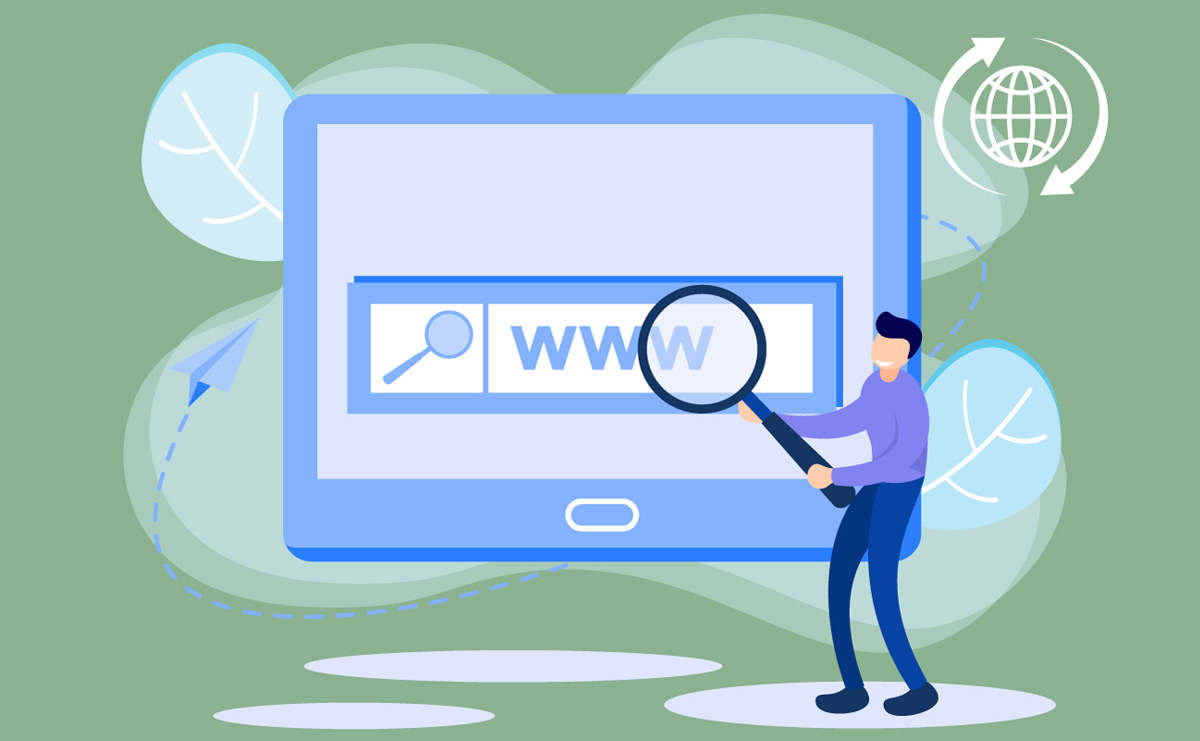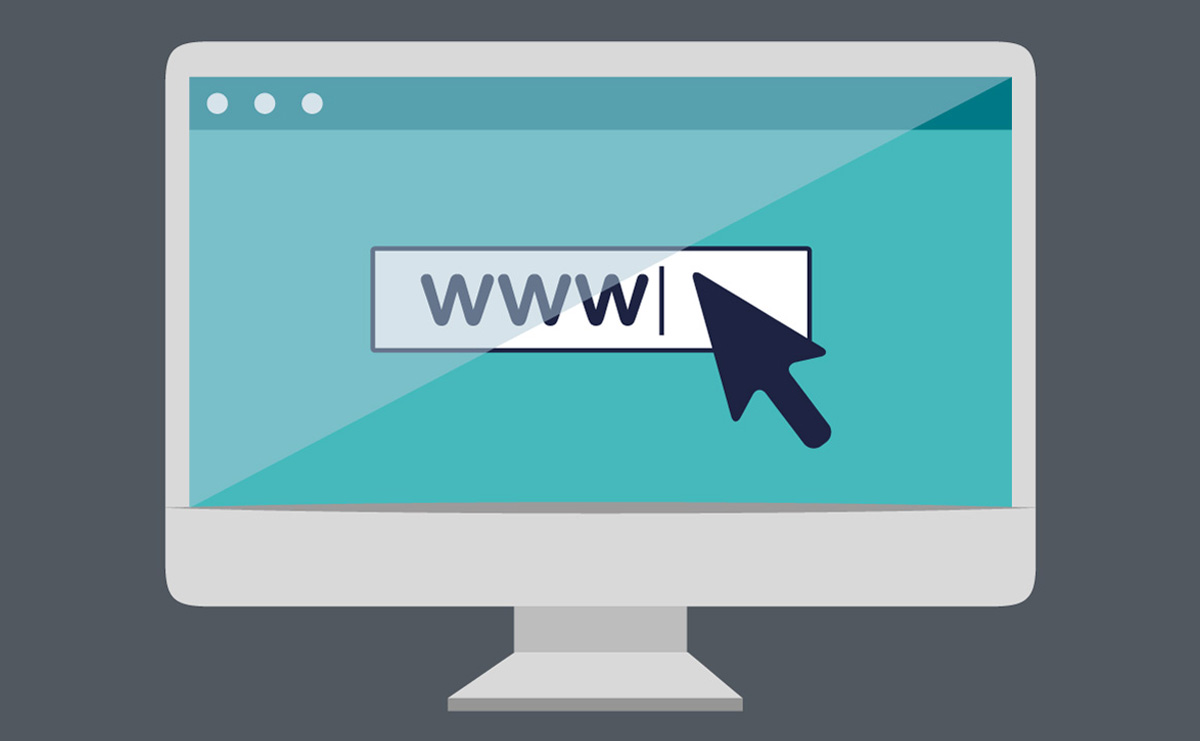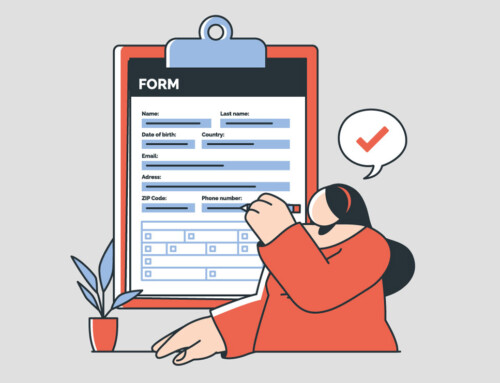Contents
Transformational Law Firm Websites: What the Best Get Right—and Good Ones Miss
Law firm’s website is not just a virtual brochure – it is frequently the initial impression potential clients have of your practice. Indeed, most legal clients already search and screen attorneys through their law firms’ websites well ahead of an initial meeting. An elegant, easy-to-use site inspires trust and distinguishes you from others, while an ordinary site quietly chases away business. Employing these best practices in attorney web site design, your firm will be able to convert its web site into an effective growth tool.
First Impressions: Great Law Firm Websites Get Design Right
First impressions significantly influence a visitor’s perception of a law firm, making professional, visually appealing design an essential component of successful law firm websites. The initial few seconds determine whether visitors perceive the firm as trustworthy, professional, and capable of addressing their legal needs. Superior attorney website design establishes immediate credibility, conveys expertise, and encourages further exploration of website content and services offered.
Professional Visual Identity and Branding
Establishing a cohesive visual identity through branding is foundational for communicating professionalism and expertise to website visitors. Effective visual branding incorporates consistent usage of color palettes, typography, logo placement, and overall aesthetic style across all digital assets. Professional photography depicting attorneys, office settings, and contextual imagery reinforces authenticity, increasing visitors’ confidence and credibility perception. Utilizing visual elements that reflect the firm’s values and practice specialties ensure alignment with prospective clients’ expectations, distinguishing the best law firm websites from less effective alternatives. An appropriately branded visual identity thus creates an immediate positive impression and lasting recognition, enhancing client recall and engagement.

Strategic Layout and Content Hierarchy
Effective layout design emphasizes content hierarchy, guiding visitors intuitively through critical information points on the website. Structured content placement—including clear headings, subheadings, and distinct content sections—supports effortless information processing. Priority content, such as practice areas, attorney biographies, and calls-to-action, should occupy prominent positions to immediately engage visitor interest. Employing a logical flow with sufficient whitespace enhances readability and prevents content overload, maintaining visitor attention. The strategic alignment of interactive elements such as consultation requests or contact forms further facilitates seamless user interaction, reflecting meticulous attorney website design planning. This deliberate layout approach directly influences user retention and encourages prospective client actions.
Typography and Color Scheme Choices
Typography selection and color schemes are subtle yet powerful elements influencing user perceptions and readability. Carefully chosen typefaces that convey clarity and professionalism significantly enhance user experience and content absorption. Readability considerations involve selecting appropriate font sizes, line spacing, and typeface combinations suitable for digital reading. Equally important is the deliberate application of color psychology principles; professional color schemes contribute positively to perceived trustworthiness, authority, and emotional comfort. For example, utilizing blue tones conveys reliability, while neutral shades promote formality and seriousness. Thoughtful integration of these typographical and color considerations within attorney website design underscores the firm’s professionalism, fostering immediate visitor trust and facilitating sustained engagement.
User Experience: Speed, Mobile, and Navigation
High-quality user experience is an essential differentiator that distinguishes adequate law firm websites from the best law firm websites. Users arriving at a website expect clarity, intuitive navigation, and immediate access to essential information. To fully engage prospective clients, a website must deliver seamless browsing experience across devices, particularly mobile platforms.
Mobile Responsiveness and Cross-Device Compatibility
Clients increasingly access information through mobile devices. Attorney website design must therefore prioritize mobile responsiveness, ensuring that layout, images, and text adapt perfectly to various screen sizes. Navigation menus should be streamlined for mobile usage, allowing easy interaction through touch-based interfaces. Effective mobile responsiveness includes simplified navigation, clearly visible call-to-action buttons, and text that remains legible without the need for zooming or horizontal scrolling. This approach reduces user frustration and keeps potential clients engaged, facilitating longer sessions and lower bounce rates.
Page Loading Speed and Performance Optimization
Page load time significantly impacts user satisfaction and retention. Industry benchmarks indicate that visitors often abandon sites that take longer than three seconds to load. Optimizing website speed involves compressing images, leveraging browser caching, minimizing scripts, and using content delivery networks (CDNs). Quick-loading law firm websites significantly reduce bounce rates and enhance visitor satisfaction. Additionally, faster-loading pages improve search engine rankings, directly contributing to greater online visibility and increased client acquisition.
Clear and Intuitive Navigation Structure
A clear, intuitive navigation structure is critical for guiding visitors effectively through a website. Primary information, such as practice areas, attorney profiles, contact information, and blog resources, should be accessible through straightforward menus or submenus. Using descriptive, unambiguous labels (“Practice Areas,” “Meet Our Attorneys,” “Contact Us”) ensures visitors quickly find what they seek. Avoid complex menu structures, excessive submenus, or legal jargon that could confuse users. Consistent navigation across all pages supports ease of use and ensures visitors remain focused on engaging with content rather than figuring out how to navigate the website.
The following table illustrates how even a few seconds of delay can drastically affect your website’s ability to retain users:
| Page Load Time | Approx. Bounce Rate (one-page visits) |
| 2 seconds | ~9% (most visitors stay and browse) |
| 5 seconds | ~38% (over a third leave immediately) |
Table: Page Load Time vs. Visitor Bounce Rate
Compelling Content and SEO Visibility
The content presented on law firm websites must establish credibility, reflect expertise, and enhance search engine visibility. Comprehensive, professionally written, and optimized content attracts, engages, and converts potential clients. Strategic attorney website design complements well-crafted content, creating a holistic experience that reinforces trustworthiness and encourages visitor interaction.
Informative and Authoritative Legal Content
Quality content positions a law firm as knowledgeable and authoritative. Websites featuring comprehensive descriptions of practice areas, insightful blog posts, legal updates, and detailed FAQs effectively communicate the firm’s expertise and responsiveness to client needs. Regularly updated content addressing common client concerns or emerging legal developments reinforces authority and signals ongoing professional commitment. Utilizing a structured approach—such as clearly outlined sections, bullet points, and concise language—ensures readability and user engagement. This practice significantly contributes to converting casual website visitors into engaged clients.
Search Engine Optimization and Keyword Strategy
SEO’s best practices significantly influence the discoverability of a law firm’s online presence. Effective SEO strategies involve selecting precise keywords, optimizing page titles and headings, writing descriptive meta descriptions, and using schema markup to enhance search engine understanding. Strategic incorporation of targeted keywords, without compromising readability, ensures higher organic rankings. However, keyword density should be carefully managed to avoid negative SEO impacts. Quality content creation combined with proper keyword placement helps ensure that potential clients searching for relevant legal services readily find the firm’s website.
Client-Centric Blogs and Thought Leadership
Blogs and thought leadership articles represent valuable content types to attract and retain client interest. High-performing attorney websites frequently maintain blogs featuring detailed articles addressing practical legal questions, case studies, or industry insights. Consistent publication of relevant content reinforces the firm’s credibility and nurtures trust with prospective clients. Additionally, thought leadership content shared via social media and email newsletters extends audience reach, driving traffic back to the firm’s site. Integrating these content assets within the broader site architecture further optimizes SEO performance and client conversion rates.
Building Trust Through Social Proof and Personal Connection
Establishing trust is paramount for converting website visitors into actual clients. Successful law firm websites strategically leverage social proof and personalized content to build credibility, reassure potential clients, and encourage engagement. Exceptional websites integrate these trust-building components seamlessly into the overall attorney website design, enhancing client confidence and driving higher conversion rates.
Client Testimonials and Success Stories
Integrating client testimonials and success stories effectively demonstrates the firm’s ability to achieve favorable outcomes. Authentic testimonials convey direct, relatable experiences, significantly influencing the decision-making process of prospective clients. Testimonials should clearly highlight specific legal matters handled by the firm, the quality of service received, and the measurable results achieved. Similarly, presenting anonymized case results, compliant with applicable ethical guidelines, reinforces credibility without compromising client confidentiality. These components, strategically placed throughout the site—particularly on practice area and attorney profile pages—substantiate the firm’s claims of expertise, establishing a foundation of trust essential for successful conversions.
Professional Attorney Profiles and Firm Biographies
Detailed attorney profiles enhance transparency and forge connections with potential clients by showcasing professional credentials, experience, and personal attributes. A comprehensive biography section, thoughtfully integrated into the website, provides insights into each attorney’s areas of practice, education, accolades, and professional affiliations. Including professional yet approachable photography further humanizes the attorneys, increasing perceived trustworthiness. The best law firm websites ensure profiles highlight unique expertise or notable casework, clearly demonstrating how each attorney’s professional background aligns with prospective clients’ needs. This clarity contributes directly to visitor confidence, increasing the likelihood of engagement and consultation requests.
Credible Awards, Accreditations, and Certifications
Prominently displaying industry awards, professional accreditations, and certifications substantially enhances perceived credibility. Recognition by respected legal organizations and industry-specific bodies validates the firm’s professional standing and expertise. Displaying these achievements visibly—often on the homepage or dedicated recognition section—reinforces the firm’s authority and competitive advantage. Incorporating visual elements, such as badges or logos of respected institutions, within the attorney website design further elevates trust and prestige. Effective presentation of these credentials differentiates top-performing websites from their less credible counterparts, directly supporting client conversion efforts.
Security, Privacy, and Accessibility Compliance
Robust security measures, clear privacy policies, and stringent accessibility compliance distinguish superior law firm websites. Adhering to these standards is not merely an ethical obligation; it also protects client confidentiality, mitigates legal risks, and broadens potential client reach. Integrating compliance within attorney website design ensures seamless adherence to ethical standards and regulatory requirements.
Ensuring Data Security and Privacy Protection
Law firm websites must employ rigorous security protocols to protect sensitive client information from cyber threats and data breaches. Implementing HTTPS encryption safeguards communication between visitors and the website, protecting client submissions through forms or client portals. Comprehensive privacy policies should transparently detail data collection practices, clearly outline how client information is used, stored, and protected, and specify visitor rights concerning data management and privacy. Transparent communication about privacy practices fosters client trust, demonstrates regulatory compliance, and reduces legal risks associated with data mishandling or cybersecurity breaches.
Compliance with Legal Advertising Regulations
Strict adherence to legal advertising rules and ethical obligations is vital for maintaining professional standards. Accurate disclosures, clear disclaimers, and appropriate labeling of legal contents such as differentiating informational articles from legal advice—are crucial compliance elements. Attorney websites must include specific disclaimers clarifying that website interactions do not establish an attorney-client relationship unless explicitly confirmed. Additionally, ensuring promotional content meets state bar advertising guidelines mitigates the risk of ethical violations. Incorporating compliance considerations into the initial stages of website planning and design significant streamlines ongoing compliance management.
Adherence to Accessibility Standards and ADA Compliance
Accessibility is a critical yet often overlooked aspect of legal website compliance. Best practices require websites to conform to guidelines set by the Americans with Disabilities Act (ADA) and Web Content Accessibility Guidelines (WCAG). Ensuring accessible content involves providing alternative text for images, designing keyboard-navigable interfaces, using sufficiently contrasting colors, and including captioning for multimedia. Adherence to accessibility standards not only broadens audience reach but also mitigates litigation risks associated with non-compliant digital experiences. Comprehensive implementation of accessibility within the attorney website design promotes inclusivity, ethical responsibility, and demonstrates commitment to providing equitable access to all potential clients.
Interactive Features for Client Convenience
Advanced interactive features significantly enhance client experience and distinguish top-tier law firm websites. Incorporating functionalities that facilitate effortless communication, easy document handling, and streamlined scheduling reinforces the firm’s professionalism and operational efficiency. Effective attorney website design integrates these interactive elements seamlessly, encouraging visitors to transition from prospectively leads to engaged clients.
Online Scheduling and Appointment Booking Tools
Integrating online scheduling capabilities empowers potential clients to conveniently book consultations without direct contact, reducing administrative overhead and streamlining the client acquisition process. High-performing websites feature intuitive calendar interfaces, allowing visitors to select available dates and times that align with attorney availability. These automated systems minimize scheduling conflicts, eliminate unnecessary communication delays, and optimize resource allocation within the firm. Additionally, scheduling tools often include automated reminders, significantly reducing no-shows and cancellations. Law firms deploying such interactive scheduling mechanisms elevate client convenience and significantly enhance their competitive positioning.
Secure Client Portals and Document Exchange Platforms
The implementation of secure client portals exemplifies advanced attorney website design practices. These platforms allow clients to safely share confidential documents, review case updates, and communicate securely with attorneys and staff. Utilizing secure login procedures, encrypted data storage, and clearly structured document management interfaces, client portals significantly enhance user confidence and reduce security vulnerabilities. By providing clients with continuous, secure access to their case information, law firms improve operational efficiency, minimize administrative tasks, and elevate overall client satisfaction. Such functionality is often a hallmark of the best law firm websites, illustrating an elevated commitment to client data protection and engagement.
Real-Time Communication Features and Live Chat Integration
Real-time communication tools such as live chat provide immediate engagement opportunities, enabling visitors to promptly obtain preliminary information or clarification. Professionally implemented live chat interfaces, either staffed by trained personnel or supported by AI-driven chatbot technology, facilitate swift responses to client inquiries and reduces response times. Such interactive features effectively capture leads that might otherwise leave due to lack of immediate support. Properly managed, live chat enhances visitor interaction, positively influences conversion rates, and improves client retention. Integration of these communication tools demonstrates a firm’s proactive approach, significantly improving overall visitor experience and reinforcing professionalism in law firm websites.
The table below highlights how many law firms currently use some of these advanced features:
| Feature (Online) | Firms Offering It (%) |
| Firm website (any presence) | 87% of firms (have a site) |
| Mobile-friendly design | ~92% (self-reported) |
| Online contact form or live chat | 40% (use online client messaging) |
| Online consultation scheduling | 15% (allow booking on website) |
| Secure client portal access | 35% (offer a client portal) |
| Online invoice payment | 41% (offer online payments) |
| Active legal blog on website | ~33% (one-third of firms) |
Table: Adoption of Advanced Features on Law Firm Websites
Many small firms have yet to adopt features like online scheduling or client portals – which presents an opportunity for those that do.
For a solo or mid-sized firm, adding even one or two of these conveniences can elevate your site from good to great. Of course, any interactive tool should be backed up on your end (for example, make sure someone is assigned to promptly respond to chat queries or form submissions). When implemented well, these features impress clients and also save your staff time by cutting down on phone tag and repetitive administrative tasks.
Conclusion: From Good to Great
Elevating a law firm website from good to great is an investment of time and effort, but it yields tangible returns. A great website acts as a tireless digital ambassador for your firm – attracting the right clients, establishing trust before you even speak, and streamlining client interactions. In an environment where prospective clients have many firms to choose from, those with top-tier websites clearly stand out. They project professionalism and modernity, which can easily become the deciding factor for someone choosing between your firm and a competitor.
Importantly, not every improvement must happen at once. You can evolve a good website into a great one through steady enhancements. Perhaps start with a design refresh and better messaging, then add new content and SEO tweaks, then roll out interactive tools like a portal or scheduling app. Monitor your site’s metrics to see the impact – you will likely notice more engagement and more inquiries as you implement changes. For example, faster load times will ensure visitors stick around to read your content, and richer content will make your calls to action more effective. Over time, these refinements compound into a web presence that truly elevates your practice. In the end, your website becomes a driver of efficiency, compliance, and revenue – which is exactly what a modern law firm needs to thrive.
Upgrade Your Firm’s Website with RunSensible
Building and maintaining a great website doesn’t have to be daunting. RunSensible offers a law firm website builder fully integrated with its practice management platform. You can design a professional, mobile-responsive site with drag-and-drop ease – including features like online intake forms, appointment scheduling, and even a client portal – all without coding. Because RunSensible’s platform connects your website to tools like built-in CRM, calendaring, and billing, inquiries from your site flow directly into your workflow for prompt follow-up. The result is a seamless experience for clients and less manual work for your team. With customizable legal-specific templates and built-in SEO optimization, RunSensible helps your website not only look great but also perform well in search rankings. If you are ready to implement the best practices described above, RunSensible can make it happen quickly and easily.
FAQs
What are the must-have features of the best law firm websites?
A few core elements make a law firm website effective. First, a professional design that is mobile-friendly and fast-loading, so visitors can use it on any device. Second, clearly organized content about the firm’s services and attorneys (with dedicated pages for each practice area and easy-to-find lawyer bios). The site should also feature prominent calls to action on every page—like “Contact Us” buttons or a consultation form—to encourage visitors to reach out.
How can a law firm website help bring in more clients?
A high-quality website can be one of your strongest marketing tools. By appearing prominently in search results (thanks to good SEO), your site attracts a steady stream of potential clients searching online. Once they arrive, informative content builds trust, for example, a helpful blog post can show that your firm understands their issue. Strong calls to action (such as easy-to-find contact forms or “Call Now” buttons) convert visitors into leads by prompting them to reach out.
What common mistakes make a law firm website “bad” or ineffective?
Common pitfalls include outdated design, slow performance, and poor mobile compatibility. If a site looks old or cluttered—or doesn’t work well on phones—visitors may leave quickly. Another mistake is lacking clear information: some sites provide only minimal details or bury important facts in jargon and long paragraphs. That confuses users. Not having obvious calls to action is also a big mistake – if it is not clear how to contact the firm, you will lose leads. Technical missteps matter too.
How often should a law firm update or redesign its website?
You should update the content on your site regularly – at least every month or two. Frequent small updates (like posting a new blog article, adding recent case results, or refreshing attorney bios) show that your firm is active and keeps information accurate. As for the site’s design and structure, consider redesigning every 2 to 3 years. Web technology and styles change, so a refresh every few years ensures your site stays modern and user-friendly.
Do small law firms really need features like blogs or client portals on their website?
Even smaller firms can benefit from features like blogs or client portals. A blog can greatly improve your online visibility by showcasing your expertise. By posting articles on common legal questions or legal updates, you provide valuable information to potential clients (and boost your search presence). Even one post a month can make a difference in attracting visitors. Similarly, a client portal might sound like a “big firm” tool, but it can save time and improve client service for a small practice.
Sources
- https://www.forbes.com/advisor/business/software/law-firm-website-design/
- https://attorneyatlawmagazine.com/legal-marketing/website-design/best-law-firm-websites
- https://www.findlaw.com/lawyer-marketing/blog/award-winning-examples-of-law-firm-website-design-tips/
- https://www.wix.com/blog/best-law-firm-websites
- https://www.lawpay.com/about/blog/law-firm-website-design-guide/
- https://www.founderjar.com/inspiration/law-firm-websites/
- https://www.websiteplanet.com/blog/best-lawyer-website-examples/
Disclaimer: The content provided on this blog is for informational purposes only and does not constitute legal, financial, or professional advice.






